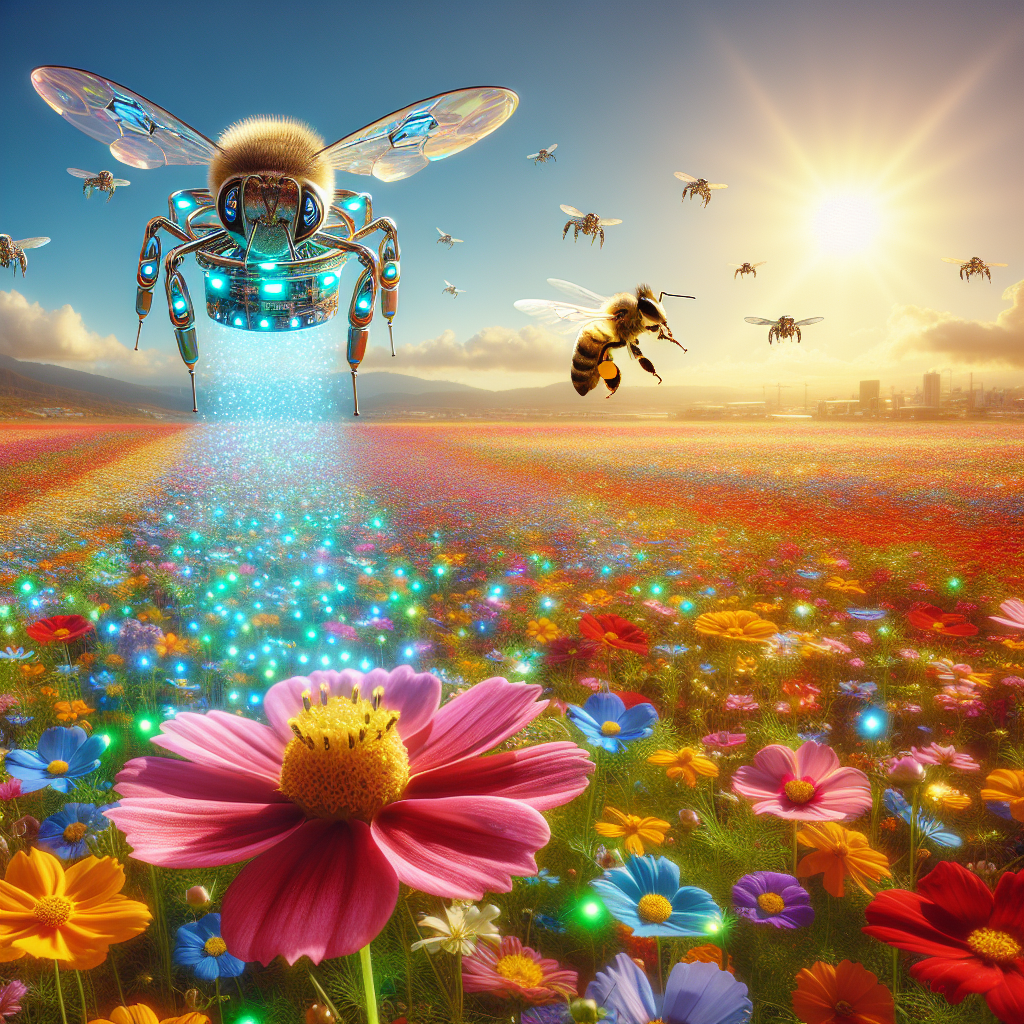Enhancing Pollination with AI Technology
Pollination is a critical process in the reproductive cycle of plants, as it is the mechanism by which pollen is transferred from the male part of the flower to the female part, leading to fertilization and the production of seeds. This process is essential for the reproduction of many plants, including crops that are important for human consumption.
However, pollination is facing significant challenges due to factors such as habitat loss, climate change, and the decline of pollinator populations. In recent years, researchers and technology companies have been exploring the use of artificial intelligence (AI) technology to enhance pollination and ensure the continued reproduction of plants.
AI technology can be used in various ways to improve pollination, from monitoring pollinator behavior to developing robotic pollinators that can assist in the pollination process. In this article, we will explore how AI technology is being used to enhance pollination and the potential benefits it can bring to agriculture and the environment.
Monitoring Pollinator Behavior
One of the key ways in which AI technology is being used to enhance pollination is by monitoring pollinator behavior. By using sensors and cameras to track the movement of pollinators such as bees and butterflies, researchers can gather valuable data on their foraging patterns, preferences, and the factors that influence their behavior.
This data can then be used to develop strategies to attract pollinators to specific areas, optimize the placement of flowers and nesting sites, and create habitats that are more conducive to pollination. By understanding the behavior of pollinators, farmers and conservationists can improve the efficiency of pollination and ensure the continued reproduction of plants.
Developing Robotic Pollinators
In addition to monitoring pollinator behavior, AI technology is also being used to develop robotic pollinators that can assist in the pollination process. These robotic pollinators are designed to mimic the behavior of natural pollinators, such as bees and butterflies, and can be programmed to pollinate specific crops or flowers.
Robotic pollinators have the potential to address the declining population of natural pollinators and ensure the continued reproduction of plants in areas where pollinator populations are low. By using AI technology to develop robotic pollinators, researchers and farmers can enhance pollination and improve crop yields.
Benefits of Enhancing Pollination with AI Technology
There are several potential benefits to enhancing pollination with AI technology. Some of the key benefits include:
– Increased crop yields: By improving the efficiency of pollination, AI technology can help to increase crop yields and improve food security for communities around the world.
– Conservation of pollinator populations: As natural pollinator populations decline, AI technology can help to ensure the continued reproduction of plants by developing robotic pollinators that can assist in the pollination process.
– Sustainable agriculture: By using AI technology to enhance pollination, farmers can reduce their reliance on chemical pesticides and fertilizers, leading to more sustainable agricultural practices.
– Biodiversity conservation: By attracting and supporting pollinators, AI technology can help to conserve biodiversity and protect ecosystems that rely on pollination for reproduction.
FAQs
Q: How does AI technology monitor pollinator behavior?
A: AI technology can monitor pollinator behavior by using sensors and cameras to track the movement of pollinators, gather data on their foraging patterns, preferences, and the factors that influence their behavior.
Q: What are the potential benefits of developing robotic pollinators?
A: Developing robotic pollinators can help to address the declining population of natural pollinators, increase crop yields, conserve pollinator populations, promote sustainable agriculture, and conserve biodiversity.
Q: How can farmers and researchers use AI technology to enhance pollination?
A: Farmers and researchers can use AI technology to monitor pollinator behavior, develop robotic pollinators, optimize the placement of flowers and nesting sites, and create habitats that are more conducive to pollination.
In conclusion, enhancing pollination with AI technology has the potential to revolutionize agriculture and conservation efforts by improving the efficiency of pollination, increasing crop yields, and conserving pollinator populations. By monitoring pollinator behavior and developing robotic pollinators, researchers and farmers can ensure the continued reproduction of plants and protect ecosystems that rely on pollination for survival. As AI technology continues to advance, the possibilities for enhancing pollination are endless, and the benefits for agriculture and the environment are significant.

